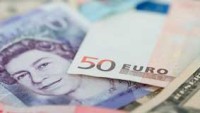 Total new orders for manufactured durable goods in the United States jumped by 4.9% in January, reversing December’s upwardly revised 4.6% drop. Consensus forecasts were for a monthly increase of 2.5%. The data follows better-than-expected industrial production figures from last week that showed output increasing by 0.9% month-on-month in January.
Total new orders for manufactured durable goods in the United States jumped by 4.9% in January, reversing December’s upwardly revised 4.6% drop. Consensus forecasts were for a monthly increase of 2.5%. The data follows better-than-expected industrial production figures from last week that showed output increasing by 0.9% month-on-month in January.
US manufacturers have been struggling since the second half of last year amid weak global demand and a strong dollar, relying on domestic demand to sustain growth. The latest figures could be just a blip after a poor December, or a sign of a much-needed turnaround in the sector. Inventories of durable goods fell 0.1% in January after rising by 0.2% the previous month – a possible indication that businesses are paring back on unsold goods as demand picks up.
When excluding the volatile transportation sector from the data, durable goods were up by 1.8% over the month, beating expectations of a 0.2% increase. Excluding defense items, durable goods were up by 4.5% in January, which follows an upwardly revised 2.5% decrease in December.
The closely watched core capital goods orders, which excludes defense and aircraft goods, rose by 3.9% in January and was above estimates of a 1.0% rise. The core figure is used as a gauge for business spending in the US and had plummeted by 3.7% in December.
The biggest gainers over the month were civilian and defense aircraft orders, which surged by 54.2% and 84.8% respectively in January. The weakest performing sectors were primary metals and computers and electronic products which saw orders rising by less than 1%.
The US dollar got a lift from the data, reaching an intra-day high of 112.95 yen before easing to 112.70 in late European session. The euro fell against the dollar, dropping to a day’s low of 1.0986 before recovering just above 1.10 dollars.
The greenback has come off 13-year highs since the end of January as investors have pushed back the timing of the next rate hike by the Fed. Slowing growth in many emerging market economies and volatility in global financial markets is likely to delay another rate hike till summer at the earliest, versus expectations of a March hike after the December FOMC meeting.
Recent data coming out of the US has been mixed. Jobs and retail sales data have been robust, with even inflation topping estimates last month. However, the latest consumer confidence index and the Markit services PMI for February both disappointed by largely missing estimates. First quarter GDP growth is forecast at a 2.1% annualized rate. Growth could fall below this if the slowdown in services as indicated by the surveys materializes and the rebound in manufacturing proves short-lived.
Source: XM Broker













